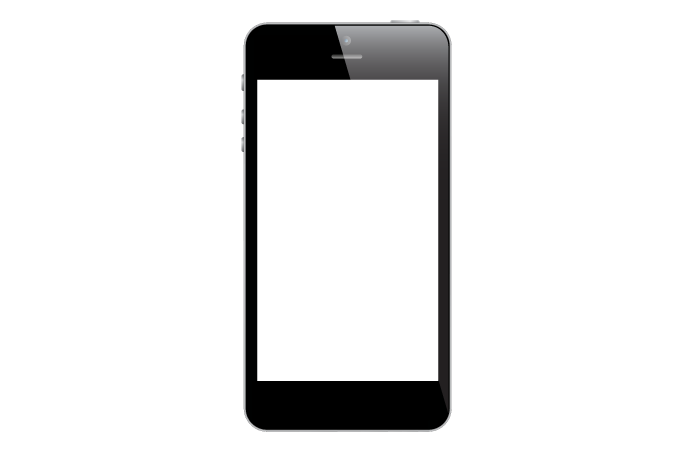Responsive Website Design
Creating Mobile Friendly Web Designs
Mobile Web Browsing
With the increasing number of website users turning to their mobile devices to browse the internet, many companies feel the need to ensure that their new website is mobile ready. Currently, over 50% of all website traffic comes from mobile browsers on cell phones and tablets. The early solution to this issue was for companies to create a second version of their website where the layout and content were completely reformatted to fit an average sized cell phone screen. These sites are referred to as "Mobile Sites" and have now become a thing of the past. The problem with "Mobile Sites" is twofold; first if you have a Desktop version and a Mobile version of your website, you are now responsible for updating two websites rather than one. The second issue with "Mobile Sites" is that they are still built to a specific size, which means they are still only in place to support one type of mobile phone size.
Ready for All Screen Sizes
As the variety of different sized mobile devices continues to increase, web developers have been working towards a solution for their websites to be fully supported on all device sizes. The solution is Responsive Website Design. Responsive websites use modern CSS and JavaScript code to allow the website to seamlessly adapt to any screen size it's viewed on. This means that your website content will automatically adjust and resize itself to the optimum size and placement for the screen size currently being used. The page content on a responsive website will react to the change in screen size instantly, this means that even rotating your phone from portrait to landscape view will trigger your page content to react and adapt to the new screen dimensions. The way a responsive website's content adapts can take many forms from text and image resizing, to adjusting content placement & even hiding less important content if it's not relevant to smaller devices.

Responsive vs Fixed Width Websites
Since the beginning of the Internet, websites have been designed using a Fixed Width format. This means that even though the background colors or graphics extend to the edge of the window, the content (text & photos) are constrained to a container that has a set width. This fixed-width design is mainly used to prevent all of the page content from shifting around and getting jumbled on different screen sizes and devices. Responsive websites are built on the opposite principle; they use a container that scales larger and smaller while shifting and adjusting the content for the best placement and size. This key difference between these two website formats plays a huge part in mobile web browsing. Fixed width websites will display content very small on cell phones; this is because everything is scaled down equally to fit all of the content on the screen. Responsive websites will individually scale and adjust the placement of all the content to avoid the user having to zoom in to read text or see photos. Many responsive sites will also have a navigation menu that is automatically formatted to make links easier to click while on a mobile device.
Below are some examples of Responsive Websites that Fencl Web Design has developed:
LOADING...

Ellingson Properties
Melbourne, FL

Hibiscus Women's Center
Melbourne, FL

J&J Carpet One
Merritt Island, FL

Imperial Salon & Spa
Melbourne, Florida

Jack Jeffcoat
Melbourne, FL

American Muscle Car Museum
Melbourne, FL

e7 Health
Las Vegas, NV

Pet Flavors Inc.
Natural Flavoring Agents

Telemedicine
Conroe, Texas

My Florida Personal Injury
Cape Canaveral, FL

Breathe Easy Dustless Flooring Removal
Brevard County, Florida

MedFast
Brevard County, FL

TradaR Real Estate Solutions
Melbourne, Florida

Mabry Dental Care
Melbourne, FL
All Pro Garage Doors & Screens
Melbourne, FL
Viking Fence and Deck
Merritt Island, Florida

Blast Off Performing Arts
Improv for Special People
Melbourne, FL

Gardening & Landscaping
Loxahatchee, Florida
Court Reporting School
Houston, Texas
Superior Tree Service
Certified Arborist

Women In Science & Engineering
Melbourne, FL

East Coast Construction
Melbourne, FL

Motor Club of America
Nationwide Roadside Assistance

Mobius Payments
Burbank, California

Marine Engines
Cocoa, FL

Spectrum Coatings
Cocoa, FL

Aeronix
Communications - Networking - Surveillance

Melbourne Auto Trim
Seating and Tops

Space Coast Intelligent Solutions
Hardware, Software & IT Solutions

Family Moving & Storage
Professional Moving & Storage Company

Space Coast Fury
Girls Travel Basketball

Airboat Rides Melbourne
Florida Airboat Attraction

Soteria Screening
Drug/Alcohol Screening
Nationwide

Malabar Products
Melbourne, FL

AIE American Institute of Education
Tustin, California

Brevard Cooling & Heating
Melbourne, FL

Florida Epoxy Flooring
Melbourne, FL

Duck and Turkey Calls Collection
Game Calls Collection and Sales

Teachout Chiropractic & Wellness Center
Fort Myers, FL

Poe Roofing and Consulting
Melbourne and Miami, Florida

Quality Comfort Air Conditioning and Heating Inc.
HVAC Melbourne, FL

Insurance Agents
Melbourne, FL

Rick's Garage Doors
Florida Keys

US Drug Test Centers
Nationwide Immediate Service

New Hope Lutheran
Church in Melbourne, Florida

Physicians
Melbourne, Florida

Terry Laboratories
International

Custom Crate Engines
Melbourne, FL

Volklaw Offices
Melbourne, FL

Contract Consultants
8-Koi
Melbourne, FL

Grand Star Realty LLC
Melbourne, FL

Marvin's Garden
Bunnell, FL

Residential & Commercial Contractor
Palm Bay, FL

CadBuilt Drafting
Cad Drafting and Design
Moorpark, California

Roy Clark Concrete
Melbourne, FL

East Coast Fishing Charters
Vero / Melbourne, FL

Space Coast Education Center
Massage School
Melbourne, FL

Shutter Protection
Melbourne, FL
Laser Alignment
Irvine, CA

Above Group Inc.
Engineering Services
Melbourne, FL

Live Meetings & Events
Melbourne, FL

Karr Professional Group
Melbourne, FL

Accu-Pak
Melbourne, FL

Bubba's Catfish House
Clermont, FL

Miller Johnson Schroeder
Michigan Lawyers

Florida Insurance
Melbourne, FL

Chrome Plating
Melbourne, FL

Sunshine State Eggfest
Melbourne, FL

Siemans in Bridgman
Car Dealership
Bridgman, Michigan

Tree Service Express
Melbourne, FL

Tech Support Florida
IT Solutions
Melbourne, FL

Estimating Service
Portland, OR

Real Estate
Cocoa Beach, Florida

Sign Access
Melbourne, FL

Holz Foundation
Melbourne, Florida

Painting Brevard
Melbourne, Florida

Wassi's Meat Market
Melbourne, Florida

Solon Dentist
Cleveland, Ohio

Medal of Honor Park
Titusville, FL

Florida Vietnam Reunion
Melbourne FL

Vietnam-Veterans of Brevard
Melbourne FL

Joe Reilly
Melbourne FL

FlameTech Fireplace
Indian Harbor Beach, FL

Celtic Home Improvement
Melbourne, FL

National Fidelity Financial
Melbourne, FL

Silver Bay Coin
Melbourne, FL

Sunshine Carpet Cleaning
Melbourne, Florida

CPA & Business Counsulting
Melbourne, FL

Florida Crane Service
Sarasota, FL

Premier Auto Parts
Melbourne, FL

GlassTech
South Florida

Shein & Wente, LLC
Melbourne, FL

Kitchen Distributors
Melbourne, FL

Free Retirement Score
Retirement Score Assessment
Orlando, FL

HIT Sports
High Intensity Training
Melbourne, FL

Semper Fi Co.com
Marine Corps Mobile PX
Buchanan, MI

Satiness
Waxing Supplies
Norwood, MA













